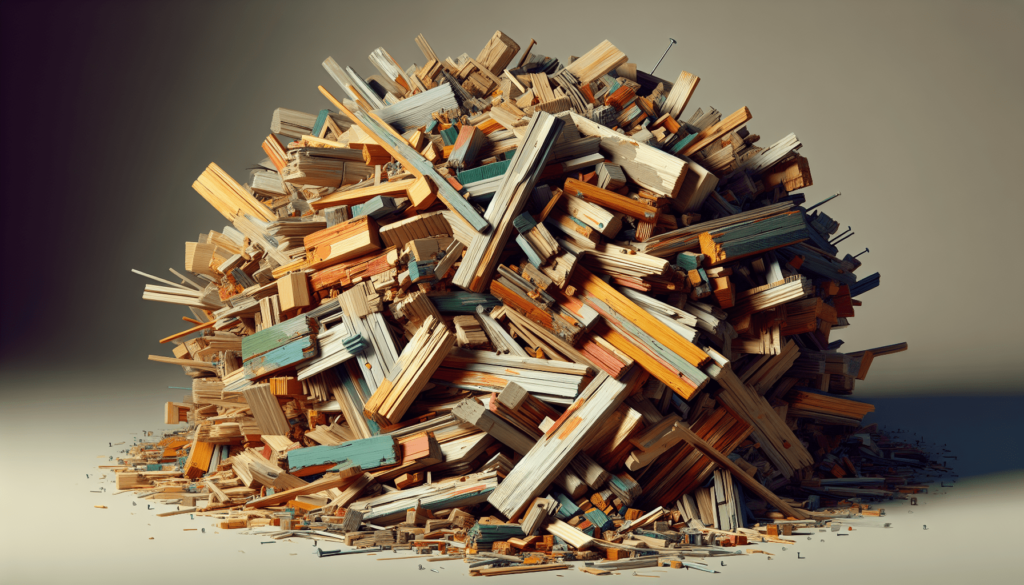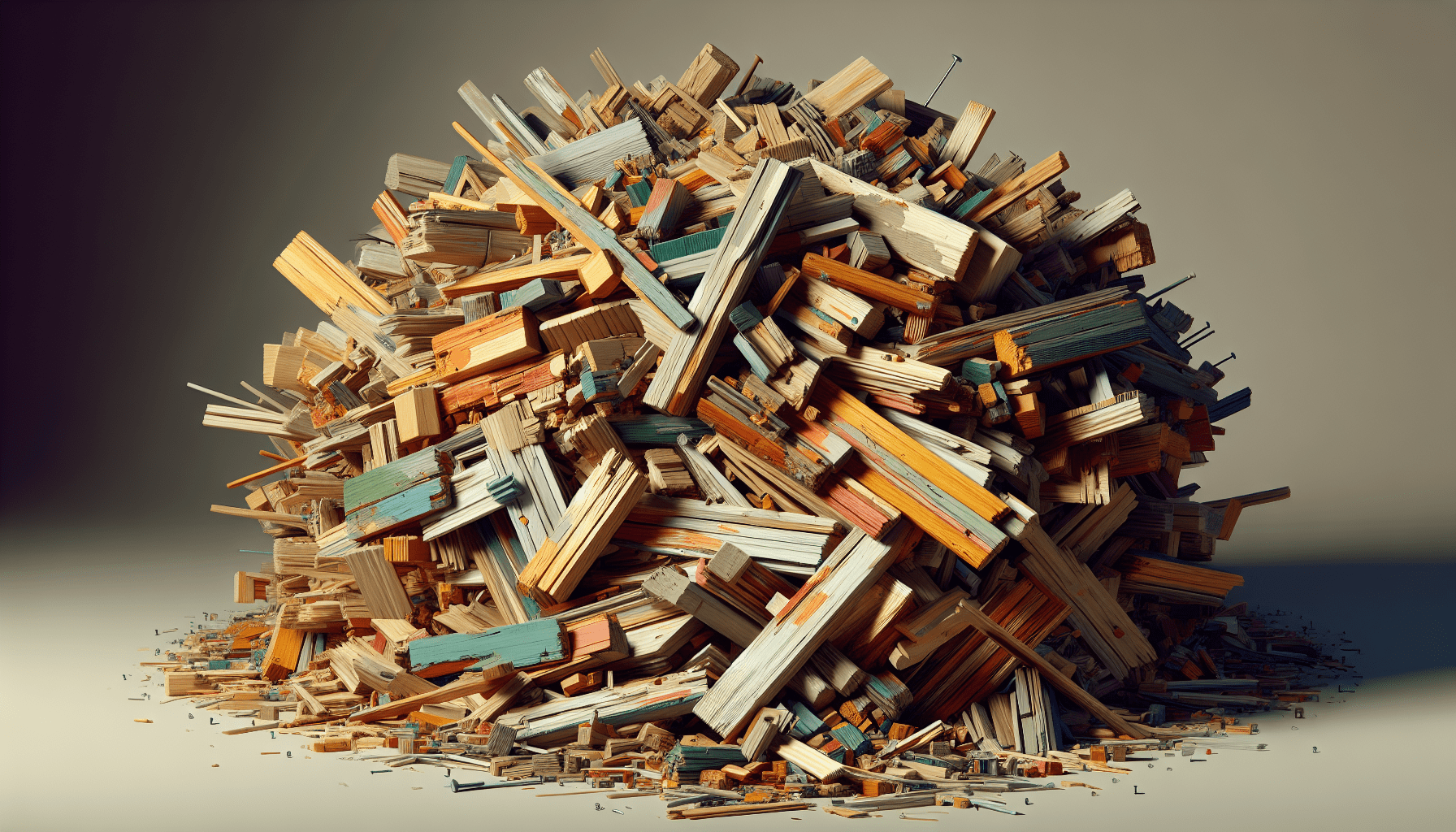Have you ever sat by a crackling fire and wondered if there’s such a thing as “bad wood” for burning? Let me tell you, not all wood is created equal when it comes to burning it in your fireplace or wood stove. Picking the wrong kind of wood can lead to some serious headaches—not the least of which could be actual headaches from smoke inhalation! So, let’s get comfy by the imaginary fireside and chat about what kind of wood you should steer clear of to keep your cozy evenings enjoyable and safe.

Understanding the Basics: Why Wood Matters
The type of wood you use for burning can affect everything from the amount of heat generated to the level of creosote buildup in your chimney. Some woods burn hotter and longer, others produce less smoke, and some should be avoided altogether for various reasons.
Hardwoods vs. Softwoods
When we talk about hardwoods and softwoods, it’s not about how hard or soft the wood actually is. Hardwoods come from deciduous trees, like oak and maple, while softwoods come from coniferous trees, such as pine and spruce.
| Hardwoods | Softwoods |
|---|---|
| Oak | Pine |
| Maple | Spruce |
| Birch | Fir |
| Hickory | Cedar |
Hardwoods are generally denser, meaning they burn longer and hotter, making them more efficient for fireplaces and wood stoves. Softwoods, on the other hand, ignite faster but produce more resin, leading to more creosote buildup. And trust me, creosote is something you want to avoid—it’s a tar-like byproduct of wood smoke that can clog your chimney and become a serious fire hazard.
The Usual Suspects: Woods You Should Avoid
Some types of wood are just outright bad for burning. Whether it’s because they produce toxic smoke, burn too quickly, or generate excessive creosote, here are some woods you should avoid like the plague.
Pine and Other Resinous Woods
Ah, pine—it’s great for building houses but terrible for burning. Pine and other resinous woods like spruce and fir have high resin content, which can cause rapid creosote buildup. You might enjoy the quick ignition and initial burst of heat, but the long-term effects on your chimney are a nightmare.
Treated or Painted Wood
Don’t even think about grabbing that old painted chair or treated lumber from your last DIY project. Burning treated or painted wood releases toxic chemicals into the air, which can be harmful to both you and the environment. It’s best to save those for the recycling center.
Driftwood
Driftwood might look all romantic and picturesque, but it’s full of salt, which can corrode your fireplace or wood stove. Plus, the salt releases toxic chemicals when burned. Just say no to that tempting piece of driftwood.
Wet or Unseasoned Wood
It’s tempting to grab whatever wood is lying around, but if it’s wet or unseasoned, you’re asking for trouble. Wet wood burns inefficiently, producing more smoke and less heat. Plus, the moisture contributes to creosote buildup. Ideally, wood should be seasoned—let it dry out for at least six months; a year is even better.
The Health Risks: More Than Just a Sore Throat
You may not realize it, but burning the wrong kind of wood can actually pose some serious health risks. Ever had a fire make you cough or give you a headache? That’s no accident.
Toxic Smoke
Burning wood that has been treated, painted, or contains a lot of resin can release harmful chemicals into the air, which you end up breathing. Inhaling these toxins can lead to respiratory issues, headaches, and in severe cases, even long-term health problems.
Increased Creosote Buildup
Creosote is more than an inconvenience—it’s a significant health risk. The buildup is flammable, increasing your chances of a chimney fire. Plus, the particulate matter in creosote can harm your respiratory system. It’s a double whammy you don’t need.
How to Choose the Right Wood
Alright, enough about the bad stuff. Let’s talk about how to choose the right kind of wood for a safe, efficient, and enjoyable fire.
Seasoned Hardwood is the Gold Standard
If you want to make the most out of your fire, seasoned hardwood is your best bet. Look for wood that has been dried out for at least six months. You can tell if it’s seasoned by checking the ends of the logs—seasoned wood typically has cracks and feels lighter. Ideal choices include oak, maple, and hickory.
Local vs. Imported Wood
You might think all wood is created equal, but locally sourced wood is usually the safer bet. Imported wood can bring pests into your home, and there’s often no way to know how it was treated. Stick with local options whenever possible.
Check for Certifications
Some regions offer certifications for firewood, verifying that it has been properly seasoned and is free from pests. Look for these certifications as an extra layer of assurance that you’re getting quality wood.

Preparing Your Wood for Burning
Once you’ve got the right kind of wood, there’s still a bit of prep work to ensure a safe and efficient fire.
Splitting Wood
Splitting wood helps it dry out faster and makes it easier to handle. Smaller pieces ignite more easily and burn more efficiently. Use a maul or a wood splitter to make the job easier.
Storing Wood
Proper storage is key. Keep your wood off the ground and covered to protect it from rain and snow. However, ensure there’s enough ventilation to let it dry out. A simple wood rack with a tarp cover usually does the trick.
Testing for Moisture
Even when you think your wood is seasoned, it’s smart to use a moisture meter to double-check. Ideally, your firewood should have a moisture content of 20% or lower for optimal burning.
Mixing Woods for Optimal Burning
Sometimes, it’s not just about picking one type of wood but mixing them for the best results. Hardwoods can provide long-lasting heat, while a bit of softwood can help get the fire started.
Layering Technique
Start with a base of softwood kindling to get your fire going quickly. Once you have a good blaze, add hardwood logs to maintain the fire and provide steady, long-lasting heat. This layering technique makes the most of both types of wood.
Avoiding Overcrowding
Don’t jam your fireplace full of logs, thinking it’s going to make for a better fire. Overcrowding reduces airflow, making the fire less efficient and producing more smoke. Instead, add logs gradually to maintain a consistent burn.
The Environmental Impact
If you’re conscientious about your carbon footprint, the type of wood you burn matters more than ever.
Sustainability
Choosing sustainably harvested wood helps protect forest ecosystems. Look for woods that have been certified by organizations like the Forest Stewardship Council (FSC).
Carbon Footprint
Believe it or not, burning wood can be carbon-neutral if done properly. When wood is sustainably harvested and burned in an efficient stove, it releases almost the same amount of carbon dioxide as it absorbed during its lifetime. However, poor choices, like burning treated wood, not only negate this benefit but add harmful chemicals into the atmosphere.
Conclusion: Burn Wisely
So there you have it—quite a lot goes into making sure your cozy fire is as safe and efficient as it is enjoyable. Always avoid resinous woods like pine, never burn treated or painted wood, and steer clear of driftwood and wet logs. Choosing the right kind of wood, understanding how to prepare and store it, and being mindful of the environmental impact can make all the difference.
Next time you sit by the fire, you’ll know that you’ve made choices that not only keep your home safe but also make your evenings truly delightful. There’s no need to sacrifice comfort for safety when you can have both. Happy burning!

